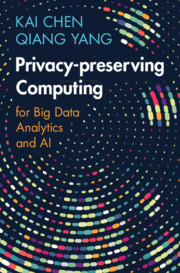 Very glad to be back to an SMC workshop as it has been nine years since my attending SMC 2015 in Malakoff! The more for the workshop taking place in Edinburgh and at the Bayes Centre. It is one of these places where I feel somewhat returning to familiar grounds with accumulated memories. Like my last visit there when I had a tea with Mike Titterington…
Very glad to be back to an SMC workshop as it has been nine years since my attending SMC 2015 in Malakoff! The more for the workshop taking place in Edinburgh and at the Bayes Centre. It is one of these places where I feel somewhat returning to familiar grounds with accumulated memories. Like my last visit there when I had a tea with Mike Titterington…
The overall pace of the workshop was quite nice, with long breaks for informal discussions (and time for ‘oggin’!) and interesting poster late afternoons, helped by the small number of them at each instance, incl. one on reversible jump HMC. Here are a few scribbled entries about some talks along the first two days.
 After my opening talk (!), Joaquín Míguez talked about the impact of a sequential (Euler-Marayama) discretisation scheme for stochastic differential equations on Bayesian filtering with control of the approximation effect. Axel Finke (in a joint work with Adrien Corenflos, now an ERC Ocean postdoc in Warwick) built a sequence of particle filter algorithms targeting good performances (high expected jumping distance) against both large dimensions and high time horizon, exploiting gradient shift MALA-like, as well as prior impact, with the conclusion that their jack-of-all-trades solutions, Particle-MALA and Particle-mGRAD, enjoyed this resistance in nearly normal models. Interesting reminder of the auxiliary particle trick and good insights on using the smoothing target, even when accounting for the computing time, but too many versions for a single talk without checking against the preprint.
After my opening talk (!), Joaquín Míguez talked about the impact of a sequential (Euler-Marayama) discretisation scheme for stochastic differential equations on Bayesian filtering with control of the approximation effect. Axel Finke (in a joint work with Adrien Corenflos, now an ERC Ocean postdoc in Warwick) built a sequence of particle filter algorithms targeting good performances (high expected jumping distance) against both large dimensions and high time horizon, exploiting gradient shift MALA-like, as well as prior impact, with the conclusion that their jack-of-all-trades solutions, Particle-MALA and Particle-mGRAD, enjoyed this resistance in nearly normal models. Interesting reminder of the auxiliary particle trick and good insights on using the smoothing target, even when accounting for the computing time, but too many versions for a single talk without checking against the preprint.
The SMC sampler-like algorithm involves propagating N “seed” particles z(i), with a mutation mechanism consisting of the generation of N integrator snippets 𝗓:=(z,ψ(z),ψ²(z),…) started at every seed particle z(i), resulting in N×(T+1) particles which are then whittled down to a set of N seed particles using a standard resampling scheme. Andrieu et al., 2024
Christophe Andrieu talked about Monte Carlo sampling with integrator snippets, starting with recycling solutions for the leapfrog integrator HMC and unfolding Hamiltonians for moving more easily. With snippets representing discretised paths along the level sets being used as particles, picking zero, one, or more particles along each path, since importance weights are connection with multinomial HMC
This relatively small algorithmic modification of the conditional particle filter, which we call the conditional backward sampling particle filter has a dramatically improved performance over the conditional particle filter. Karjalainen et al., 2024
Anthony Lee looked at mixing times for backward sampling SMC (CBPF/ancestor sampling) cf Lee et al. (2020), where the backward step consists in computing the weight of a randomly drawn backward or ancestral history. Improving on earlier results to reach mixing time O(log T) and complexity O(T log T) (with T the time horizon). Thanks to maximal coupling and boundedness assumptions on the prior and likelihood functions.
Neil Chada presented a work on Bayesian multilevel Monte Carlo on deep networks. À la Giles, with a telescoping identity. Always puzzling to envision a prior on all parameters of a neural network. Achieving a computational cost inverse to the order of the MSE, at best. With a useful reminder that pushing the size of the NN to infinity results in a (poor) Gaussian process prior (Sell et al., 2023).
 On my first evening, I stopped with a friend in my favourite Blonde [restaurant], as in almost every other visit to Edinburgh, enjoyable as always, but I also found the huge offer of Asian minimarkets in the area too tempting to resist, between Indian, Korean, and Chinese products. (Although with a disappointing hojicha!). As I could not reach any new Munro by train or bus within a reasonable time range I resorted to the nearer Pentland Hills, with a stop by Rosslyn Chapel (mostly of Da Vinci Code fame!, if classic enough). And some delays in finding a bus getting there (misled by google map!) and a trail (misled by my poor map reading skills) up the actual hills. The mist did not help either.
On my first evening, I stopped with a friend in my favourite Blonde [restaurant], as in almost every other visit to Edinburgh, enjoyable as always, but I also found the huge offer of Asian minimarkets in the area too tempting to resist, between Indian, Korean, and Chinese products. (Although with a disappointing hojicha!). As I could not reach any new Munro by train or bus within a reasonable time range I resorted to the nearer Pentland Hills, with a stop by Rosslyn Chapel (mostly of Da Vinci Code fame!, if classic enough). And some delays in finding a bus getting there (misled by google map!) and a trail (misled by my poor map reading skills) up the actual hills. The mist did not help either.

 For the final talk of this Spring season of the One World ABC webinar, we are very glad to welcome Marc Beaumont, a central figure in the development of ABC methods and inference! (And a coauthor of our ABC-PMC paper.)
For the final talk of this Spring season of the One World ABC webinar, we are very glad to welcome Marc Beaumont, a central figure in the development of ABC methods and inference! (And a coauthor of our ABC-PMC paper.)
 After my
After my  On my first evening, I stopped with a friend in my favourite
On my first evening, I stopped with a friend in my favourite 


 Privacy-preserving Computing for Big Data Analytics and AI
Privacy-preserving Computing for Big Data Analytics and AI